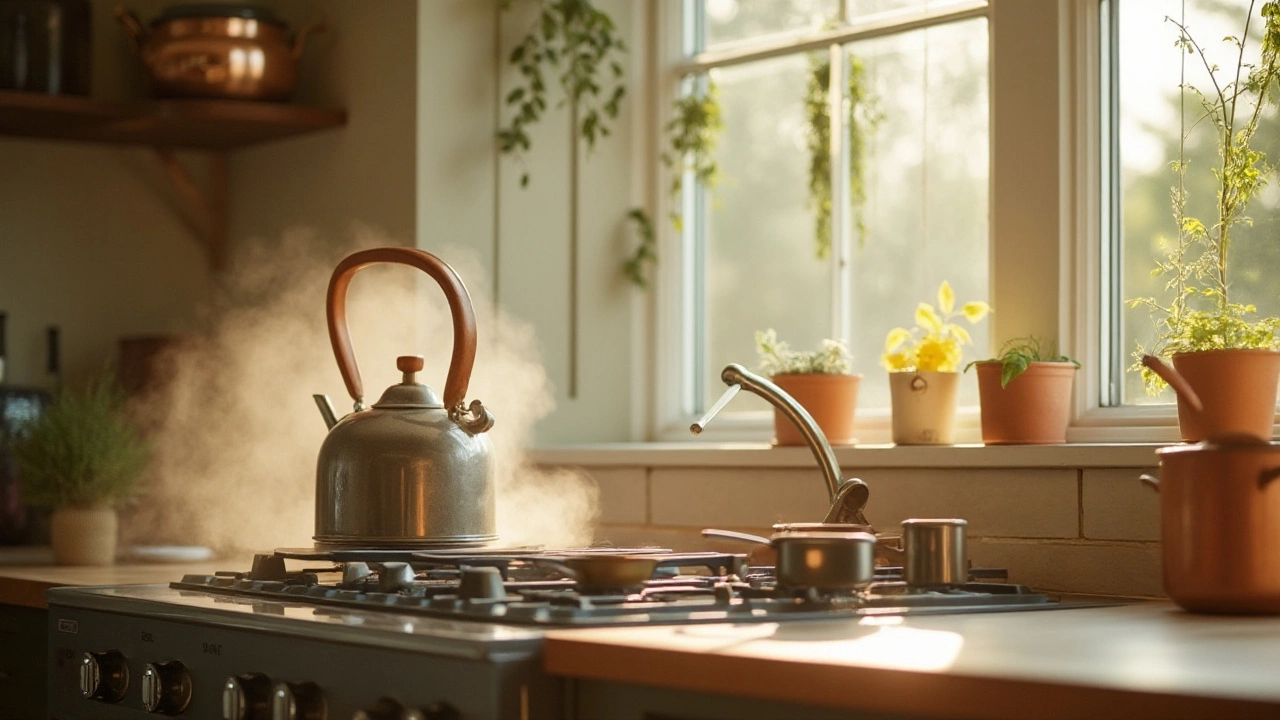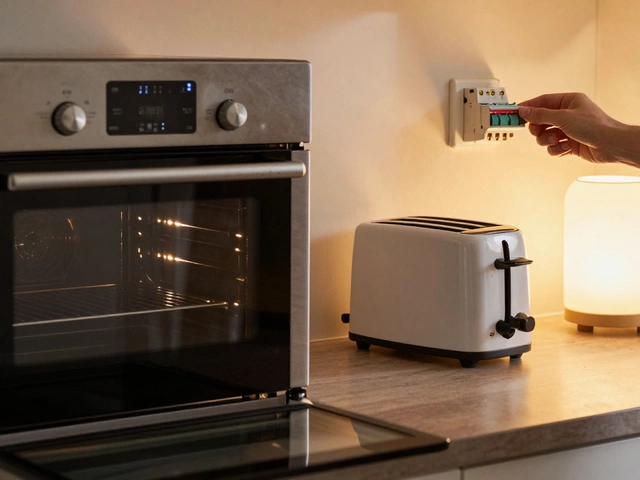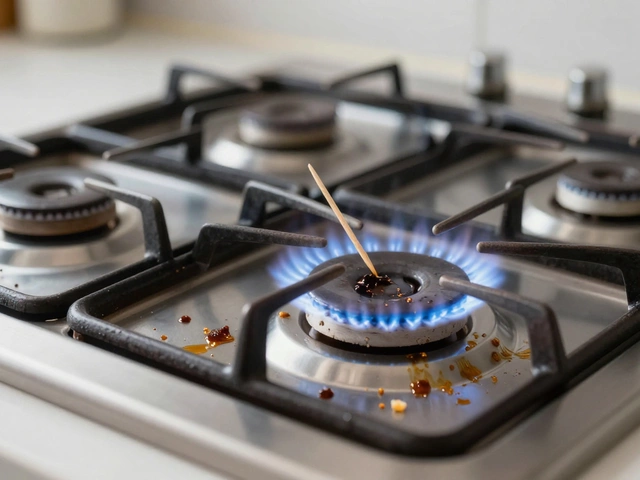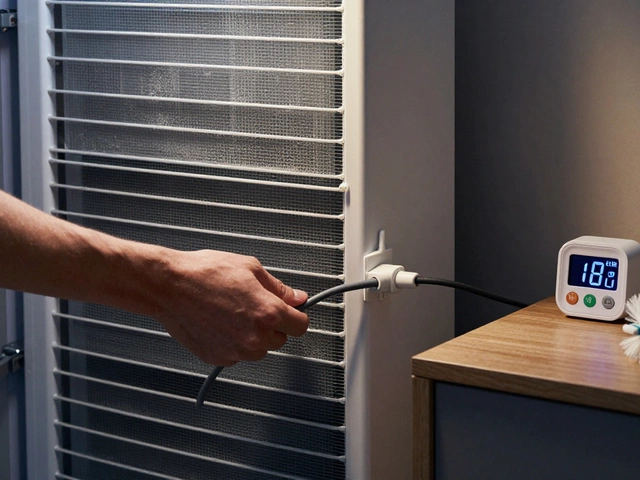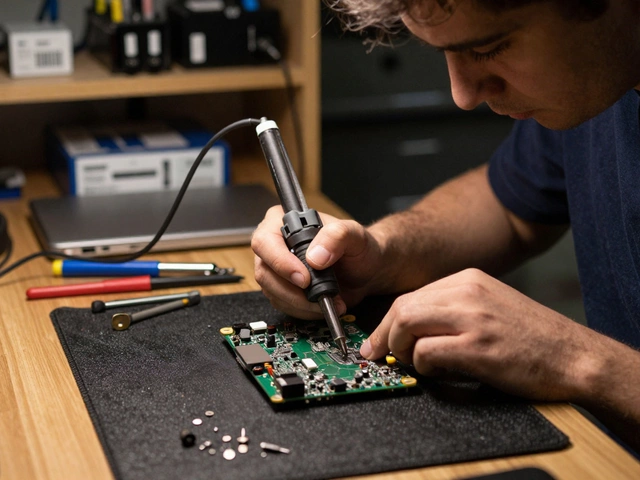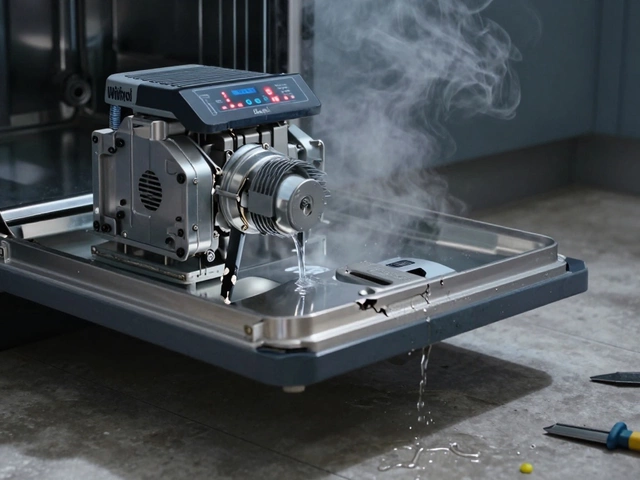It's a classic nuisance: piping hot water at your kitchen sink, while just down the hall, your bathroom faucet runs cold. Understanding the mechanisms behind such inconsistencies doesn't just provide peace of mind—it empowers you to take actionable steps, whether it's a small adjustment or time for professional help.
In many households, hot water distribution hiccups arise from benign causes, such as a simple twist of a valve or sediment build-up hidden beneath the surface. Yet, unraveling these common mysteries on your own can feel like a Herculean task without the right guidance. Whether you prefer to roll up your sleeves or want to know when to call in the cavalry, knowing how your plumbing system works is sure to save you time, money, and endless frustration.
The joy of a warm shower shouldn't be marred by cold surprises. Let's explore why your home's water system might be misbehaving and how you can restore that comforting warmth throughout your domain.
- Common Causes of Hot Water Discrepancies
- DIY Troubleshooting Tips
- When to Call a Professional
- Preventive Measures for Consistent Hot Water
Common Causes of Hot Water Discrepancies
Encountering hot water issues in your home, particularly when your kitchen boasts steaming hot water but your bathroom leaves you shivering, may be rooted in several plausible causes. One prevalent factor involves plumbing layouts unique to each residence. Homes are often built with hot water pipes running different paths, potentially leading to varying water temperature at the tap. Such differences might mean some pipes cool down more quickly due to less insulation or longer runs, thus affecting your bathroom's ability to deliver hot water efficiently.
In many cases, the type and age of the water heater itself can be telling. Traditional tank water heaters may struggle with capacity, especially during periods of heavy household use. Larger families or simultaneous use of appliances can drain the hot water reservoir, leaving only lukewarm or cold water for anyone still waiting to shower. On the other hand, tankless water heaters, while more efficient, sometimes fail to meet demand if improperly sized for the household needs.
Another frequent culprit is the state of your plumbing's infrastructure. Over time, sediment builds up within the water heater tank. This build-up not only diminishes the unit's efficiency but also results in limited hot water reaching certain parts of the house. Sediment layers act as a barrier between the water and heating elements, reducing the effectiveness of each heating cycle. Regular maintenance and periodic flushing of your water heater can ward off this issue, ensuring a consistent flow of hot water throughout your home.
In an insightful article by Home Plumbing News, a senior plumbing consultant stated, "Neglecting your water heater is akin to ignoring your car's oil changes; eventually, it'll catch up to you in unexpected ways."
Temperature settings play another critical role. Often, households are unaware that their water heater thermostat is set below where it should be for optimal performance. An inappropriate setting might mean your system is incapable of supplying uniformly hot water to all fixtures. Checking and, if necessary, adjusting the thermostat to around 120 degrees Fahrenheit could iron out these discrepancies.
Lastly, environmental factors aren't to be discounted. In colder climates, pipes exposed to freezing temperatures can lose substantial heat as water travels, particularly if they're poorly insulated. This too might explain why your sink is fine, while the bathroom struggles during colder months. Insulating your pipes is a proactive step that improves things drastically in such scenarios.

DIY Troubleshooting Tips
When you’re met with hot water inconsistencies across your home, tackling the issue head-on can be both rewarding and cost-effective. Even if you're not a seasoned plumber, a few logical steps can often decipher the cause of your hot water headaches. The key lies in systematically narrowing down the possible causes, starting from the closest and simplest checks that anyone can do, without specialized tools or training. Your quest begins with understanding the distribution system: where the hot water comes from, and how it reaches different parts of your home such as the kitchen and bathroom.
Check the Water Heater Settings and Performance
Begin by inspecting the water heater itself; it is the heart of your home's hot water supply. Ensure it is set to a temperature between 120 to 140 degrees Fahrenheit for optimal performance. If the temperature is set lower, turn it up and check after a few minutes if this resolves the bathroom's cold water issue. Sediment build-up in tank-based water heaters can also cause inefficiencies, leading to different water temperatures at various outlets. Flushing or cleaning the tank might bring surprising improvements in your hot water output across the board.Inspect Valves and Pipes
The intricate web of pipes that snake through your home can also be a suspect when only certain taps are misbehaving. Focus on checking the valves under the sinks and behind the toilets. Sometimes, a valve left partially closed can unwittingly restrict the hot water flow, leaving one outlet scalding and another frigid. Feel the pipes themselves, too—both visually inspecting and touching for warmth can reveal unexpected cold spots due to insulation issues or possible leaks. Hot water problems might be as simple as tightening a valve or sealing a leaky pipe.Thermal Expansion Tanks and Pressure
Consider whether a thermal expansion tank might be a contributing factor if low pressure is observed in the bathroom vs kitchen. Surging pressure or inadequate rest pressure can dramatically affect water temperature performance. Ensuring your system has ample and even pressure may involve adjusting or validating the current pressure settings on water heater and expansion systems."DIY repair tips can save homeowners up to 70% on maintenance bills," says plumbing expert Liam Gray of 'FixIt Plumbing'. Wise troubleshooting can reveal the root cause and potential solutions for almost any hot water issue without professional intervention, thus sparing time and the expense of a plumber's visit.
While your home’s idosyncratic plumbing layout might demand personalized solutions, these suggestions should remedy most unequal heating challenges. A little patience, careful inspection, and logical deduction can restore warmth to every faucet—and peace to your mind.
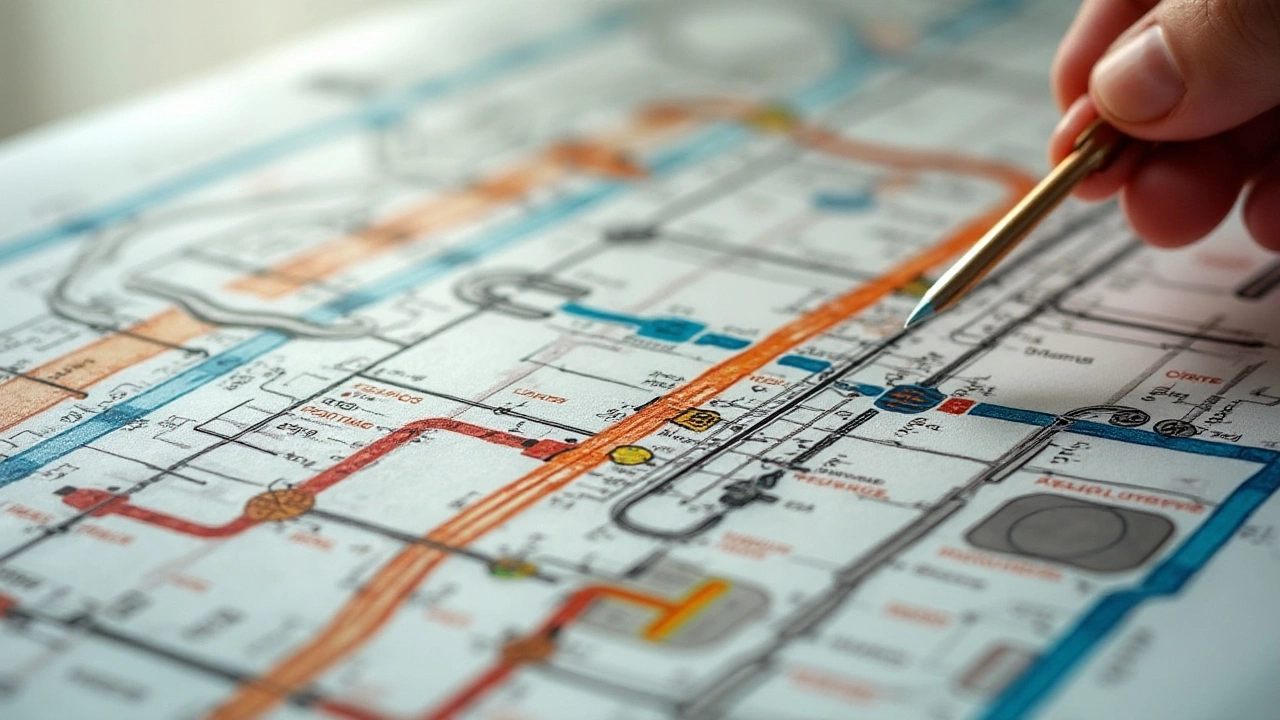
When to Call a Professional
Every DIY enthusiast knows the thrill of fixing things, but when it comes to persistent hot water issues, sometimes it’s wiser to call in a professional. Deciphering the mysteries of a finicky water heater that supplies hot water only to the kitchen, while the bathroom remains an icebox, can be a complex endeavor best left to those trained in such matters. One of the signs it’s time to seek expert help is if you’ve already tried adjusting the thermostat and checking the breaker, yet your efforts have been in vain. Professionals come equipped not only with the right tools but also with the seasoned experience to spot obscure problems quickly.
Another red flag that signals it’s time to make that call is the presence of unusual sounds emanating from your water heater. Banging, clanking, or popping noises can often indicate sediment buildup at the tank's bottom, which might not be immediately obvious to the untrained eye. Left unattended, sediment can wreak havoc, reducing efficiency and leading to premature failure. A licensed plumber has the skills to flush the tank safely and comprehensively. In addition to obvious signs, such as visible leaks or an inconsistent pilot light, you might also notice a gradual decline in the water temperature over a period, which often hints at a failing component that requires an expert diagnosis.
For those dealing with larger, more intricate systems, such as tankless or solar water heaters, the case for professional help is even stronger. These systems are particularly delicate and require a nuanced understanding of their operations. As Ted Osterhaus, a well-regarded plumbing expert once remarked,
"A tiny mishap with a modern heating system could lead to catastrophic failures that are costlier to repair than maintain. Pride in simplicity might be admirable, but it doesn’t help much if you’re left in the cold."
Sometimes, trying to save on professional services might cost more in the long run if the issue festers unnoticed underneath cosmetic improvements. Finally, when you're unsure if the issue is isolated to the water heater or if it’s a symptom of a larger plumbing problem, reaching out to a professional can provide clarity. Complex issues, like those involving municipal supply lines, require a deeper understanding of city regulations and might need certification or permissions that only licensed professionals possess. By calling in a professional, you ensure not just an immediate solution, but a lasting one that aligns with safety standards and preserves the value of your home.
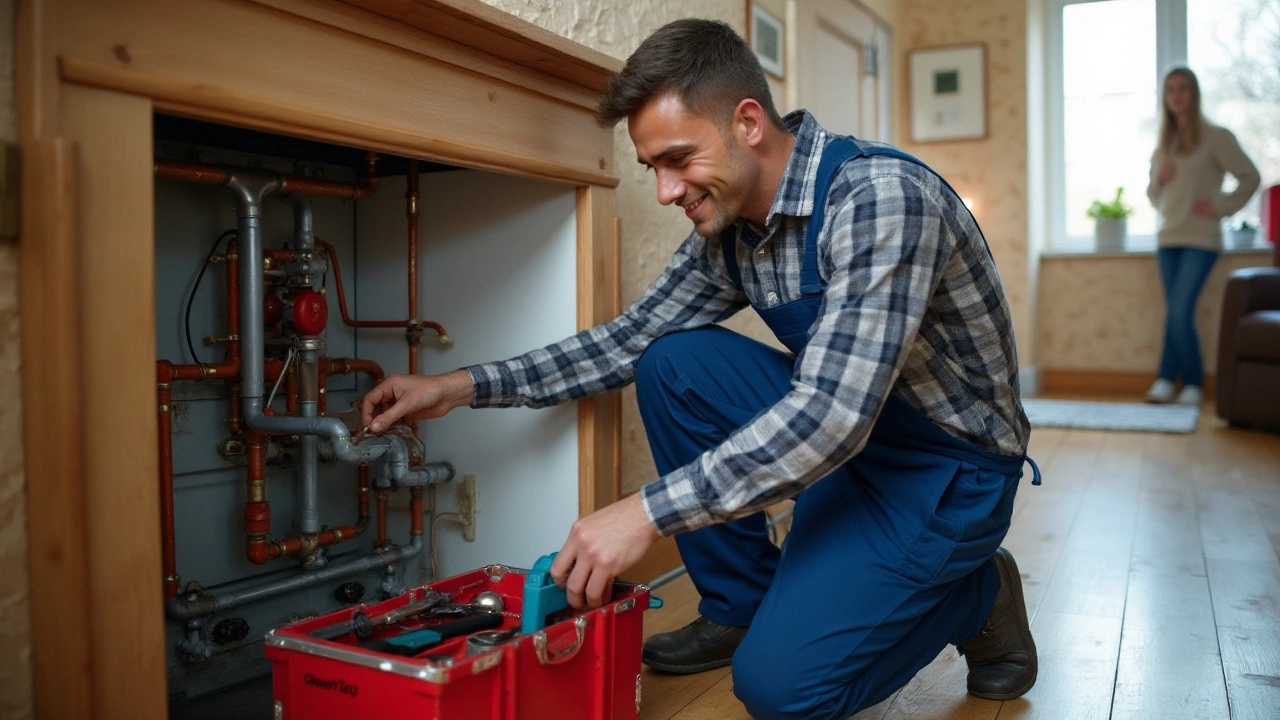
Preventive Measures for Consistent Hot Water
Ensuring your home enjoys stable hot water delivery is all about proactive habits and timely maintenance. Whether in the kitchen or bathroom, adequate heat comes down to addressing common issues before they balloon into major problems. It's always preferable to anticipate needs rather than react to a lack of supply. Understanding your water heater and plumbing system can save you from unexpected chilly surprises and pricey repairs.
A primary focus should be on regularly checking the settings of your water heater. Most devices come with temperature settings that should be adjusted seasonally to maintain efficient performance. While winter might require a higher setting due to colder inlet temperatures, peak summer can benefit from slight reductions. On average, water heaters are set between 120 to 140 degrees Fahrenheit to avoid scalding while ensuring enough warmth. It’s also wise to explore installing a hot water recirculation system. Such systems guarantee instant hot water delivery by keeping a steady flow through your pipes, which lessens the waiting time and decreases water wastage.
Regular flushing of your water heater tank can prevent sediment buildup, which often plagues traditional units. Sediments, primarily consisting of minerals separated from heated water, can settle at the bottom of the tank and reduce efficiency. A simple flush every six months can prolong your water heater's lifespan while maintaining efficient hot water distribution throughout the house. Consult your manufacturer’s guide for detailed instructions tailored to your specific model. For those who enjoy DIY projects, getting hands-on with routine plumbing assessment is invaluable. Observing for early signs of pipe corrosion or developing leaks can pinpoint problem areas before they escalate. While peering at dozens of feet of piping may seem daunting, start with visible and accessible areas, then expand as comfort grows.
The precautionary upkeep of insulative pipe coverings is often overlooked but can markedly improve energy efficiency. By wrapping exposed hot water pipes with insulating material, the heat loss is minimized, ensuring water remains hotter for longer. This is especially critical in homes where plumbing snakes through poorly insulated walls or crawl spaces. Many insulation kits are affordable and easy to install, requiring only basic tools. Moreover, conducting a pressure test on your water system periodically helps to catch unseen leaks that could affect performance.
"Preventive maintenance is the best way to ensure your plumbing infrastructure remains robust and efficient," states Jeff Peterson, a reputable water systems expert, "and it always pays off in the long run with reduced energy bills and minimized disruption."
Taking steps to balance water pressure between different points in your household may involve hiring professionals, but the payoff in consistent hot water is undeniable. Sometimes, this involves adding flow regulators to stabilize pressures across various outlets, preventing any hotspot domination by your kitchen or bathroom. Additionally, consider implementing a well-structured maintenance log. Such records should mark completed actions like inspections and replacements, empowering you with a historical account of health issues and when they were addressed.
Utilizing these preventive measures can ensure a consistent and reliable delivery, warding off the annoying discrepancies between hot water supplies found in many homes. Consistency doesn't happen by accident—it requires attention and thoughtful action. With maintenance, intervention, and occasional professional evaluations, your household’s hot water system can become as reliable as clockwork, keeping those cold surprises at bay.
